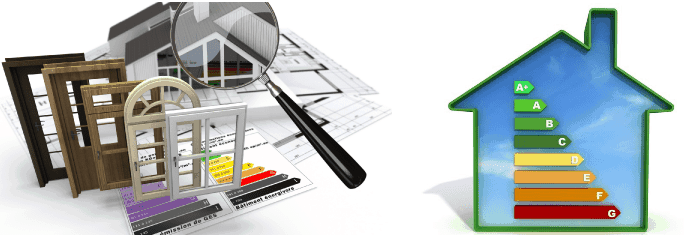
A total of 80% of hotel buildings in Spain are over 20 years old so it seems logical to think that the potential for improvement through energy use could become the engine for refurbishing our building stock. The higherrated hotels renovate periodically – around every 8 to 10 years – but this work is mainly for the purposes of reorganization, imageand design.
Data from the last INE (National Institute of Statistics) press release of 23rd May shows that the number of overnight stays in April this year was 22.1 million, a 15.9% increase on the annual rate. The objective and positive fact is that in the first quarter of 2014 overnight stays increased by 5.5% compared to the same period in 2013. This period includes the impact of Easter week in both years. This data indicates that, despite the recession weare experiencing, tourism is not only holding its own butactually increasing its business: the number of travellers in the month of April this year stood at 7,256,172, of which 47% were foreigners.
Given the scenario described above, the current state of hotel buildings, plus their increased market share, it maybe advisable to consider investing in improving buildings to provide greater comfort to clients and reduce operating costs. Energy costs represent about 9%, so reducing them would bring a clear competitive advantage, not to mention reducing the carbon footprint.
Law 2/2013 of 29th May on the protection and sustainableuse of coastal areas, and the amendment to the Coastal Law 22/1988 of July 28th provide added opportunity,since they introduce criteria for energy efficiency and water saving in repair, improvement, consolidation and modernization works that can go ahead in buildings that occupy the protection zone easement and the public domain.
The main novelty introduced, aimed at buildings which legitimately occupy this, is the possibility of undertaking comprehensive works, provided that they do not involve an increase in volume, height and surface. These works shouldmake a two-letter improvement in the energy rating of the building – or possibly achieve a B.
RD 635/2013 of 2nd August on the hotel sector – PIMA SOL- or “Plan to Promote the Environment in the hotel sector”,directed at energy refurbishment in buildings, regulatesthe acquisition of future carbon credits from the CarbonFund, to achieve a sustainable economy. This plan is an opportunity to encourage refurbishment of hotel buildings,setting up a mechanism to purchase future carboncredits by reducing direct CO2 emissions, by embarking onprojects that improve energy efficiency in Spanish tourist accommodation.
Direct emissions are defined as those produced by fossil fuel consumption, excluding those from electricity consumption. The Fund acquires the reductions achieved as a result ofworks that will improve the building by two letters in the energy rating or achieve a B, through purchase at €7/tde CO2 at 15 years.
On October 1st, 2013, the Ministry of Industry, Energy and Tourism published the Secretary of State for Energy’sResolution of September 25th that year, concerning a June25th resolution by the Board of Directors of the Institutefor Diversification and Saving of Energy (IDEA in its Spanishacronym). This lays down the legal basis and the subsidyscheme for energy refurbishment in existing buildings inthe residential sector (housing and hotel use).
The PAREER programme sets subsidies and funding for works fallingunder one or more of the following types:
• Improvement of EE in the thermal envelope (€ 31.25bn)
• Improving the EE of heating and lighting systems (€ 31.25bn)
• Replacing conventional energy with biomass (€ 31.25 bn)
• Replacing conventional energy with geothermal (€ 31.25bn)
This action should improve the energy rating of the building by one letter on the scale of carbon dioxideemissions (kgCO2/m2 year). The aim of the programmeis to encourage and promote comprehensive action toachieve energy savings, improve energy efficiency, and userenewable forms of energy.
Therefore PIMA SOL, under the Ministry of Agriculture andEnvironment, and PAREER, under the Ministry of Industry, Energy and Tourism have both launched programmes witha budget allotted to reduce our energy demand in the housing stock and boost refurbishment.
Neither of these programmes, or the changes in the CoastalAct, however, have, to date, been able to spur improvement works in our buildings. One year after the enactment of Royal Decree 235/2013 on Energy Certification for Existing Buildings, the legislation has not contributed anything of value as regards identifying the characteristics of ourhomes or buildings.
Why?
This question has more than one answer, which does notmean we should not work to solve the problem. Lack of information and communication on the approved plansand their implication; the lack of credit to finance the projects; the uncertainty of the regulatory framework on renewables; the uncertainty of the times, with a economicrecession, are all holding back potential works. These works would bring job creation; compliance with directiveson energy efficiency; reduce greenhouse gas emissions; reduce maintenance costs and energy consumption, and improve comfort and increasing competitiveness in the hotel sector.
In the hotel sector, energy efficiency should be the spur to prevent an aging housing stock from decreasing its attractiveness for future tourists, whether domestic or foreign, which could invertindicators of an annual percentage increase inemployment in recent years.
Let’s seize the opportunities.We simply must not missthat boat.
This article was published in the Special June 2014 of FuturEnergy magazine.





There are no comments yet